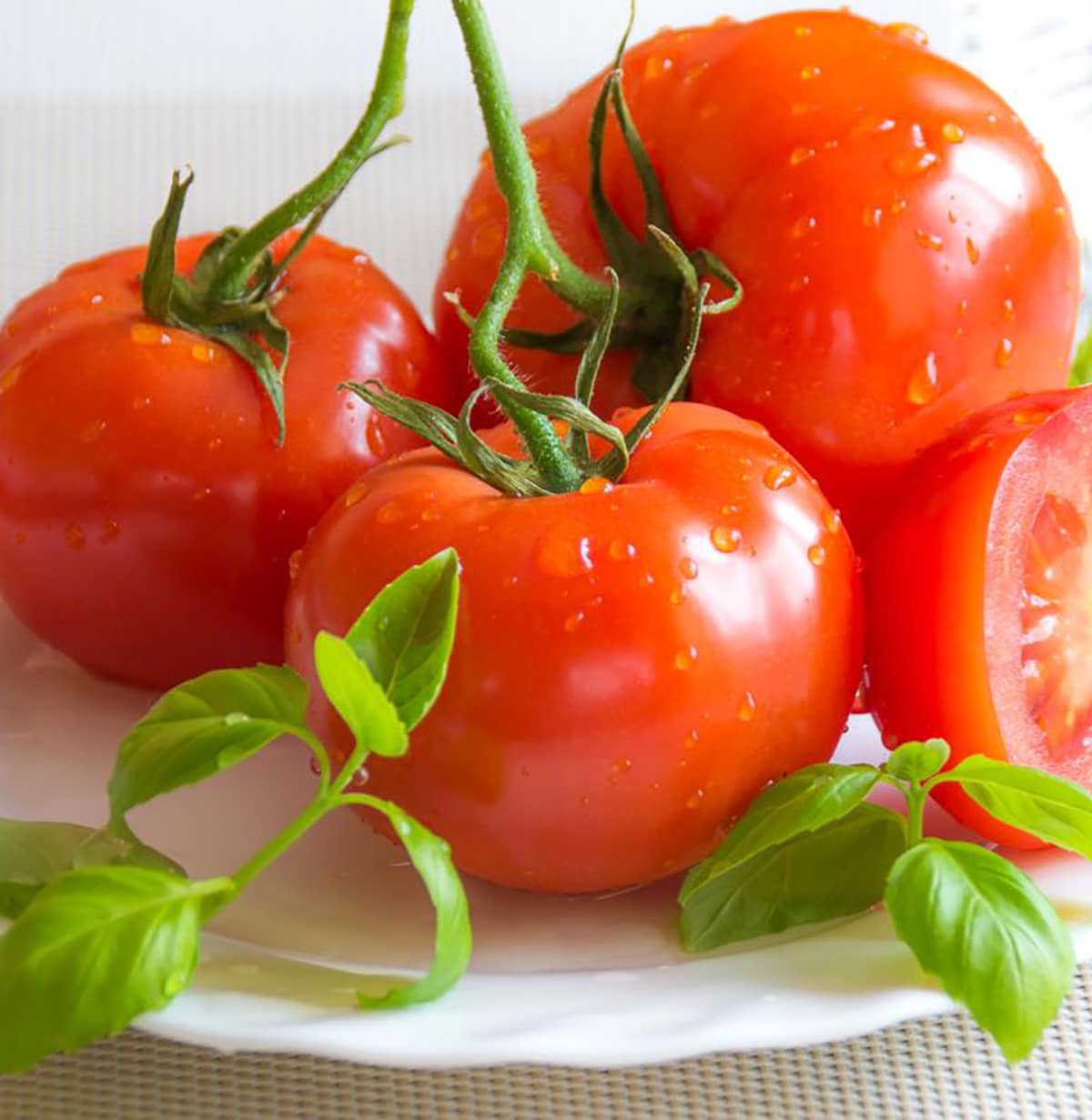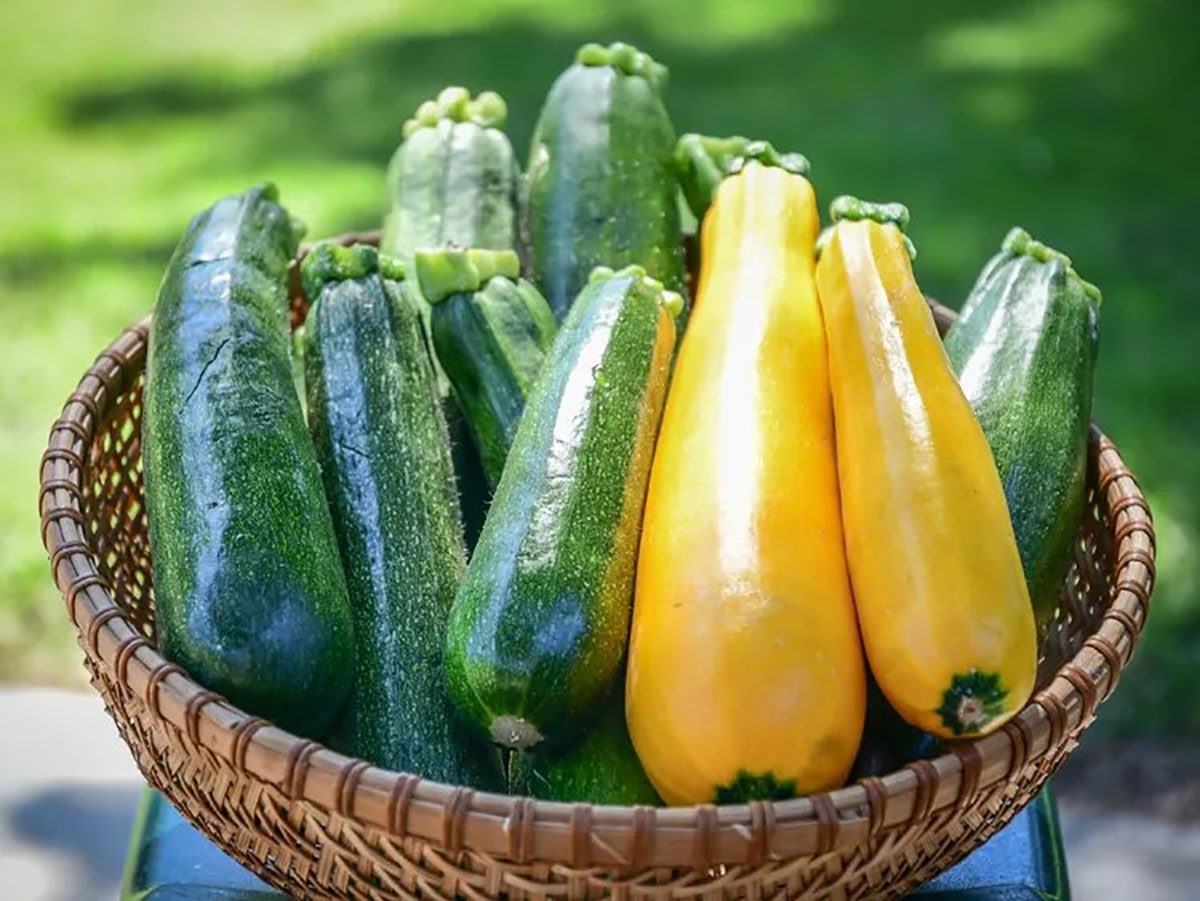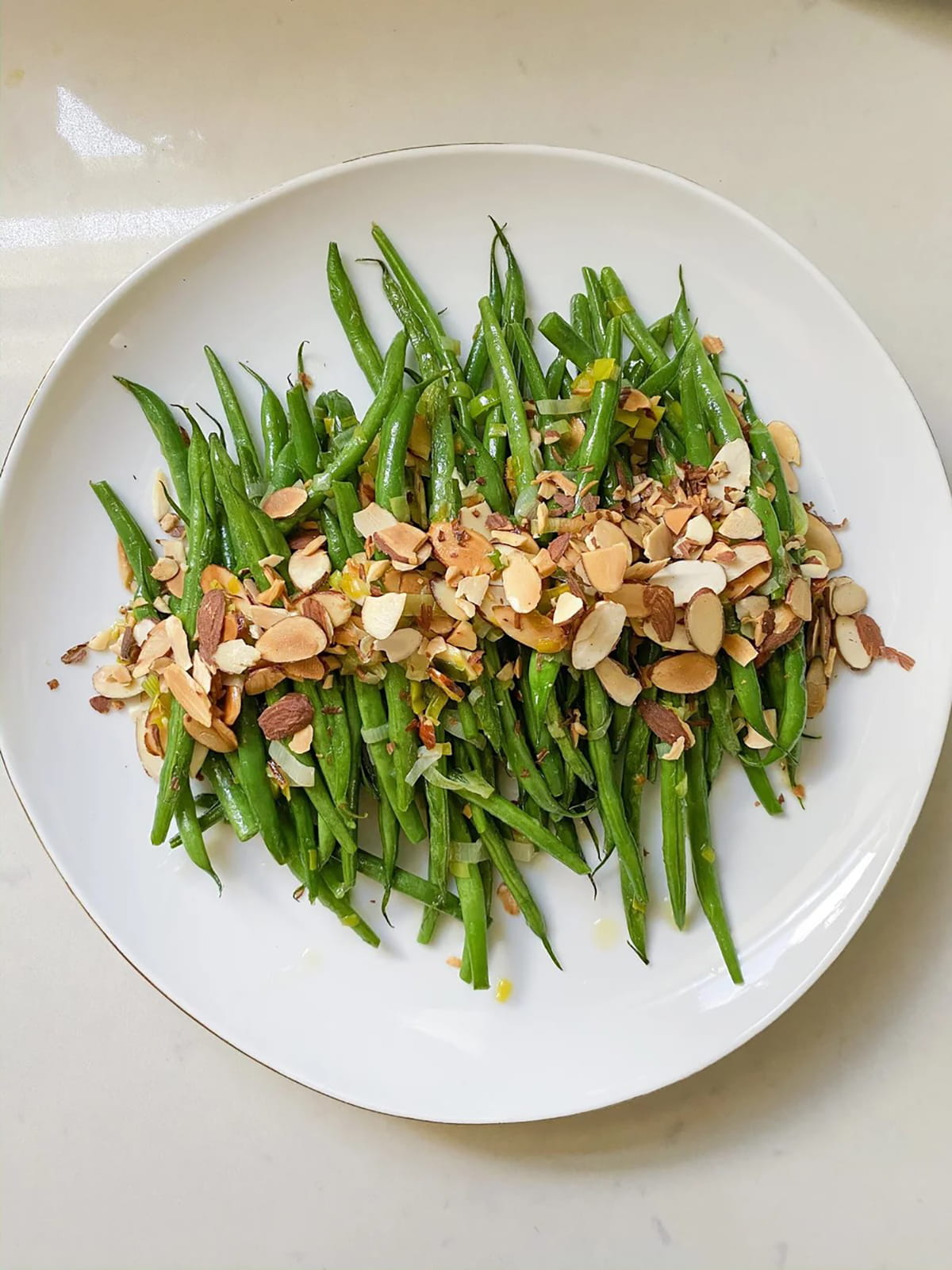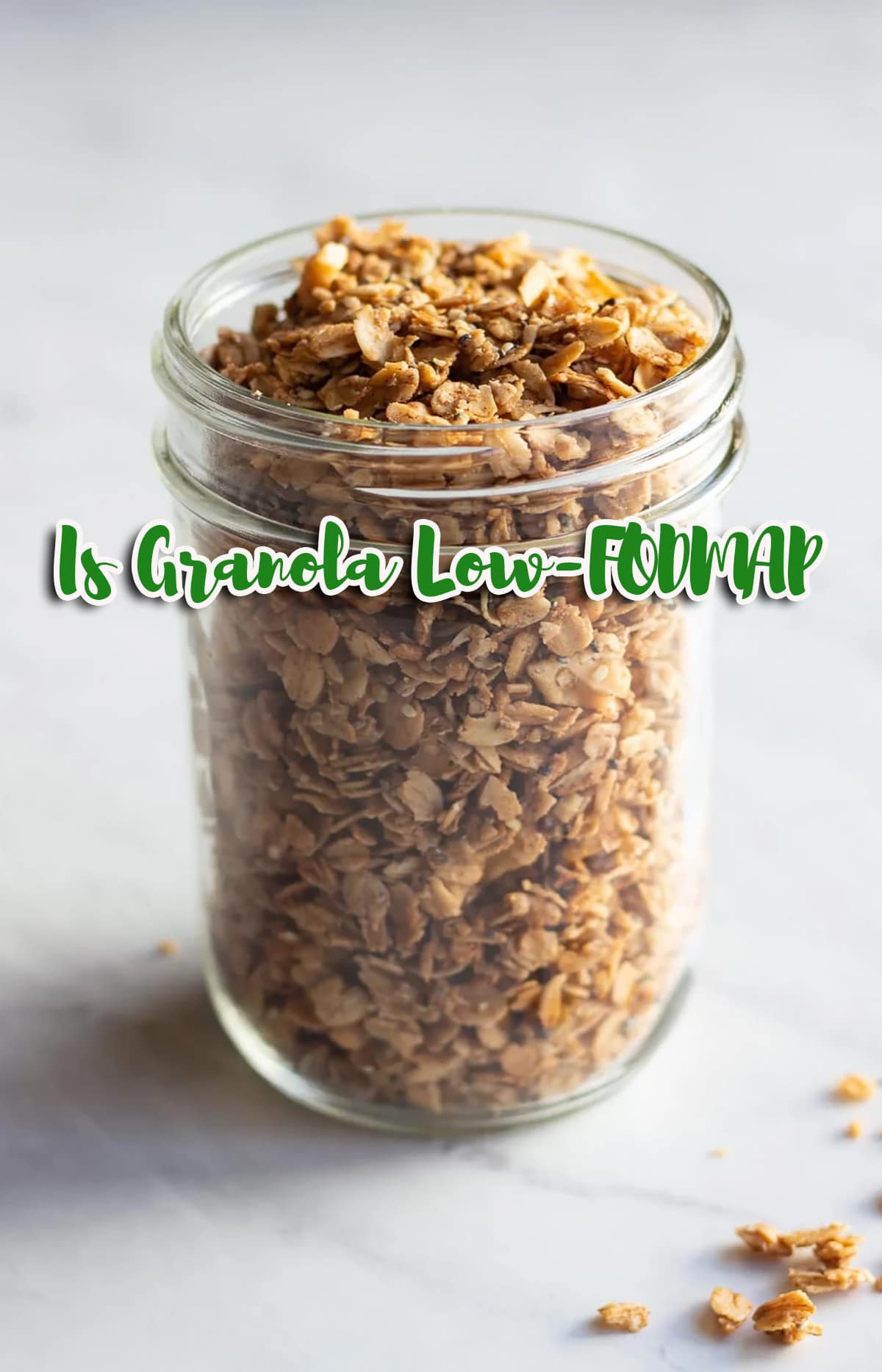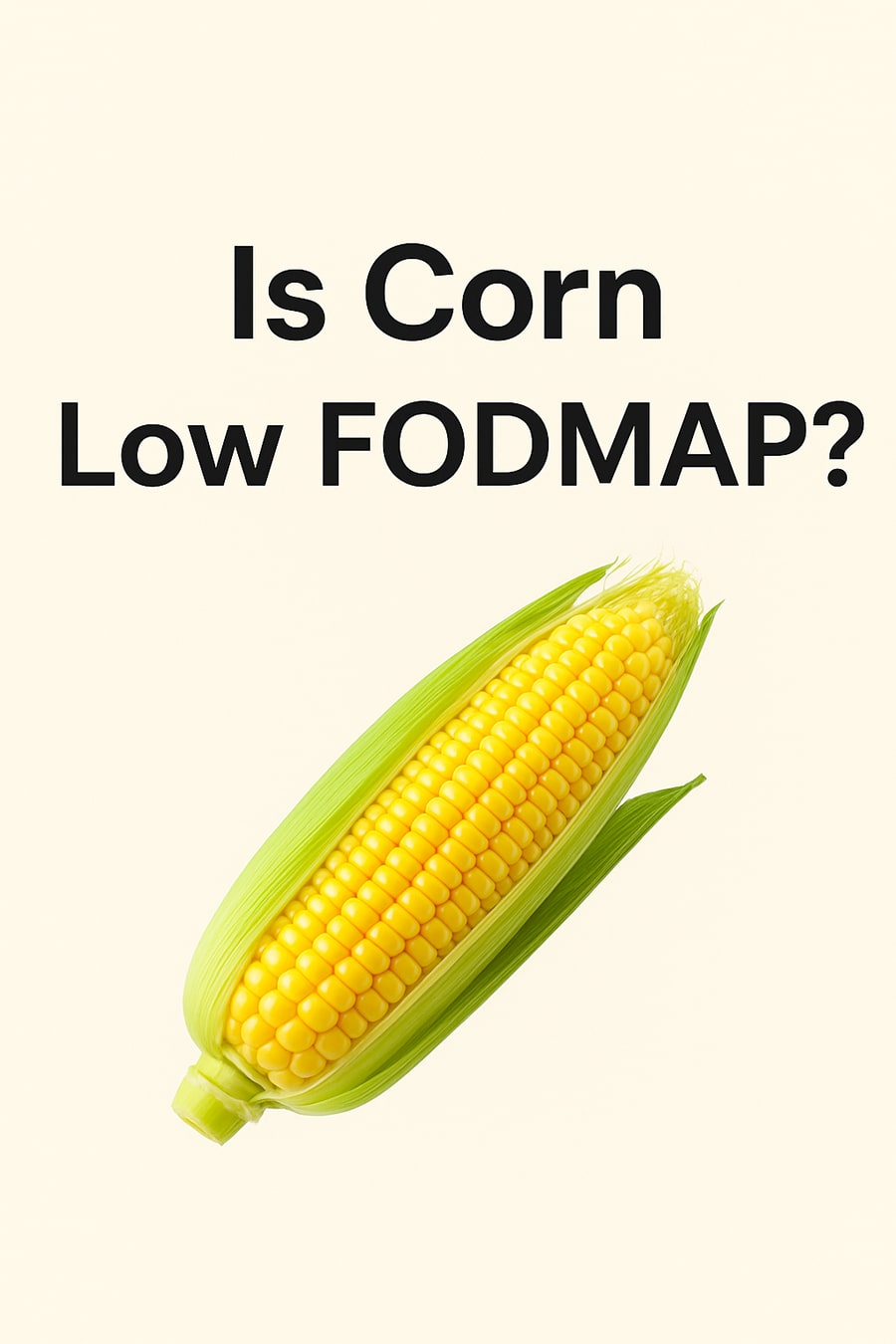Yes, if you’re wondering about the question “Are Tomatoes Low FODMAP?”, the good news is that they are low FODMAP in small portions. In large quantities, tomatoes can be high in fructose. And when used as a sauce, high FODMAP ingredients like onions and garlic are added. Evidence from Monash-aligned dietitians and lab-tested databases shows typical low-FODMAP servings such as ~½ common tomato (~65 g) or ½ cup canned tomato (~100 g).
Always check the label of any tomato-based product and pay attention to the cumulative FODMAPs in a meal.
Why do Tomatoes Confuse So Many People on a Low FODMAP Diet?
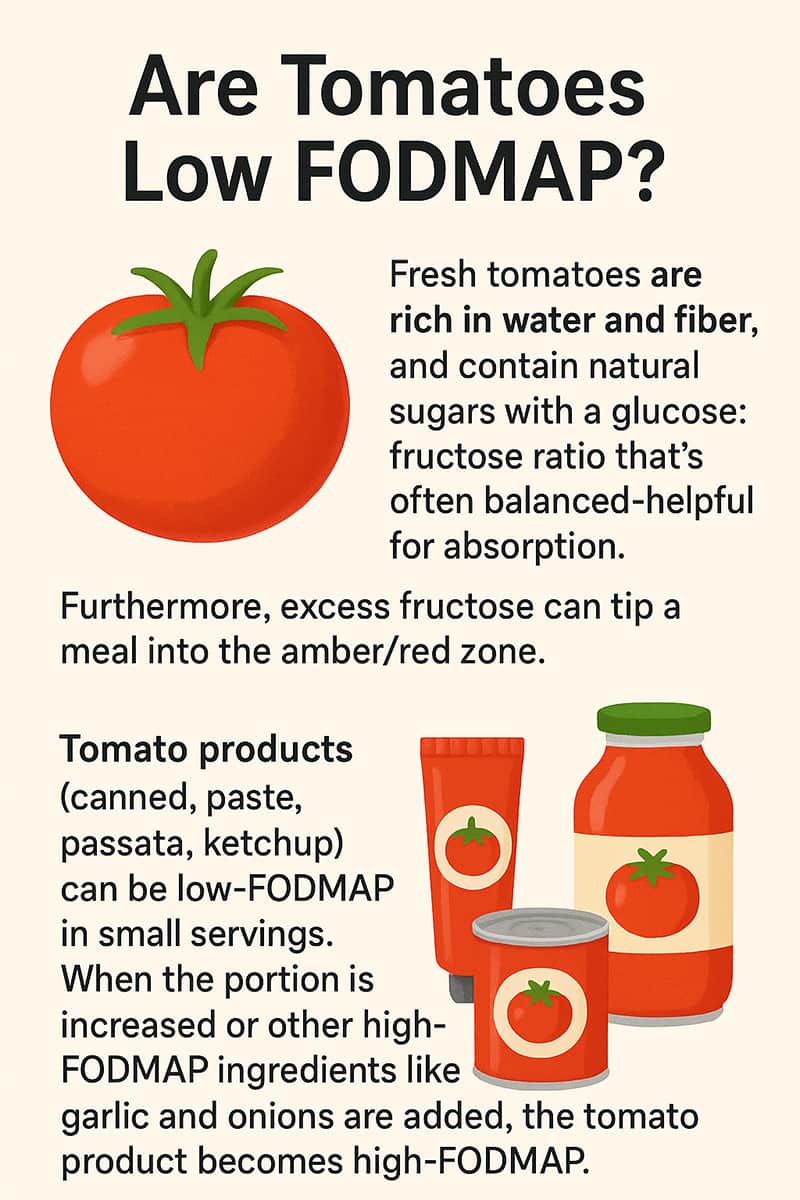
Tomatoes can be divided into two types:
Fresh tomatoes are rich in water and fiber, and contain natural sugars with a glucose: Fructose ratio that’s often balanced—helpful for absorption. Furthermore, excess fructose can tip a meal into the amber/red zone.
Tomato products (canned, paste, passata, ketchup) can be low-FODMAP in small servings. When the portion is increased or other high-FODMAP ingredients like garlic and onions are added, the tomato product becomes high-FODMAP.
The Short Answer: Practical Portion Sizes.
Below are Monash-aligned serving sizes sourced from dietitians who track app updates and lab testing. You can use these as starting points, then personalize during reintroductions:
- Common tomato (beefsteak), raw: ~65 g (≈½ medium) is low-FODMAP; larger portions can increase high fructose levels.
- Truss/on-the-vine tomato, raw: ~69 g (≈½ medium) is low-FODMAP; larger portions of ~75–93 g can increase FODMAP levels.
- Roma/plum, raw: ~48 g (≈⅔ small) low FODMAP; when serving size is ~64 g, FODMAP can be moderate.
- Cherry tomatoes, raw: ~45 g (≈3 g) low FODMAP; when serving size is ~60 g, FODMAP can be moderate.
- Canned tomatoes (with juice): ~100 g (≈½ cup) low FODMAP; amber/red as you approach ~130–180 g depending on variety.
- Tomato paste: ~2 Tbsp (≈28 g) low FODMAP; larger portions may contain fructans.
- Passata: ~72 g (≈¼ cup) low FODMAP; moderate by ~97 g.
- Ketchup/tomato sauce: ~13–16 g (≈1 Tbsp or 2 sachets) is low FODMAP if it doesn’t contain onion/garlic. Large portions contain fructans. It’s important to read the label.
Pro tip: Many tomato products labeled “tomato sauce” add onion/garlic. Both of these ingredients are high in fructans. Therefore, it’s important to read the ingredient labels of various tomato-based products.
What the Latest Research Says (2024–2025)
Low-FODMAP foods remain an important consideration in managing IBS symptoms in recent reviews and guidelines. High-FODMAP foods can trigger symptoms like bloating and pain, as well as global symptoms.
Personalization matters. Emerging studies compare low-FODMAP with other structured patterns, such as the Mediterranean or microbiome-guided diets. Several analyses suggest multiple patterns can help, underscoring the value of guided reintroduction rather than long-term restriction.
In recent studies, consumption of tomatoes has been tightened or controlled, such as by reducing portion sizes. Consuming large portions of tomatoes can trigger IBS symptoms.
In 2022, Monash University retested tomatoes (fresh and canned), adjusting the previously “unlimited” FODMAP portion limit to a specific size, as described above.
Other sources, such as FODMAP Everyday, also updated their data in April 2024 regarding the variety of tomatoes with their FODMAP content, noting that there are differences in low-FODMAP portions between tomato varieties and recommending using Monash data as the primary guide.
Is it the Tomato—or the Stack?
Even a serving of green tomatoes can add to FODMAP levels if consumed in large quantities or combined with other high-FODMAP ingredients.
Tomatoes can be low-FODMAP in small portions, but they can be reduced if consumed in combination with fruit and sweeteners. [monashfodmap]
Real-world insight (composite case from dietitian practice)
“When we swapped 1 cup of canned tomatoes for ½ cup canned + 2 Tbsp paste and made a no-onion/garlic sauce, my client kept her favorite pasta night with no symptoms. The big wins were: measured portions, no hidden fructans, and not stacking other fructose sources at the same meal.” Composite vignette based on dietitian-reported strategies; shared to illustrate practical application rather than a single person’s experience.
Source: alittlebityummy
How to Enjoy Tomatoes on a Low-FODMAP Plan
- Measure It: You can use a kitchen scale for small portions, as described above.
- Read labels: Avoid tomato products containing onions or garlic, as well as those labeled “natural flavors” with alliums or high fructose in tomato sauce.
- Dilute smartly. Stretch sauces with low-FODMAP stock and a spoonful of tomato paste to preserve flavor while keeping green.
- Give Attention to Stack: If tomatoes are a key ingredient, but watch your portions, keep your plate low in fructose and fructans.
Reintroduce systematically. Once stable, test larger tomato servings (or different products) to determine your tolerance.
Quick menu ideas (low-FODMAP Portions)
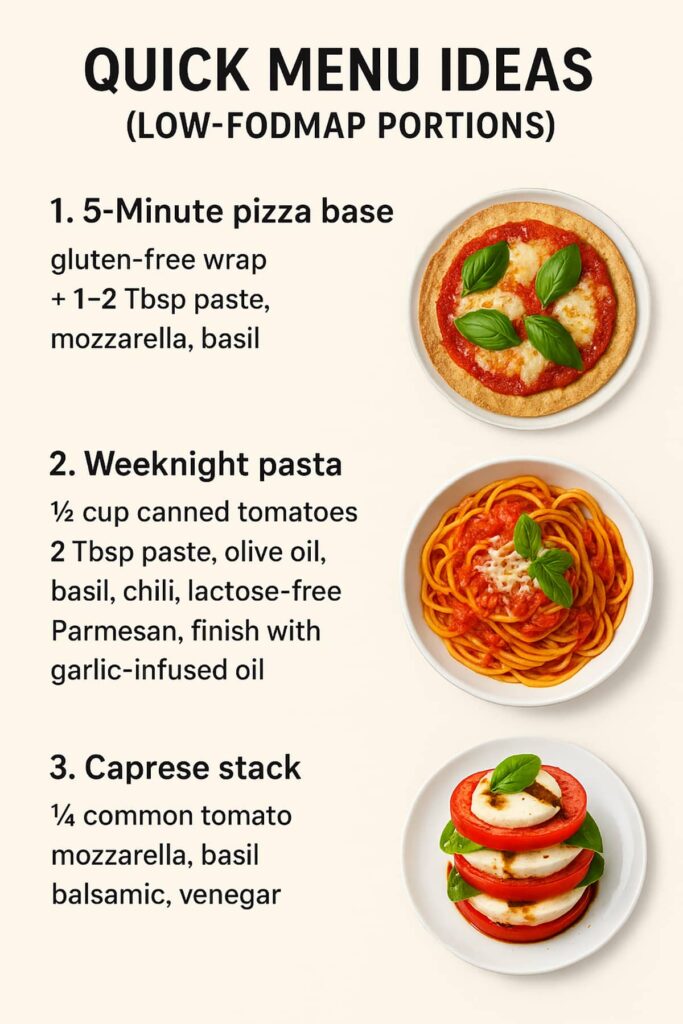
- 5-Minute pizza base: gluten-free wrap + 1–2 Tbsp paste, mozzarella, basil.
- Weeknight pasta: ½ cup canned tomatoes + 2 Tbsp paste, olive oil, basil, chili, lactose-free Parmesan; finish with garlic-infused oil (no solids).
- Caprese stack: ½ common tomato + mozzarella + basil + balsamic.
Some Common Mistakes to Avoid
Even though tomatoes are considered a low-FODMAP food, it’s important to pay attention to portion sizes. Large portions can also be harmful to IBS. Here are some misconceptions to avoid.
- “Tomatoes are high in FODMAP.” Not inherently—serving size and add-ins drive the issue.
- Trusting old charts. Tomato thresholds have changed; check a current database/app.
- Ignoring ketchup labels. Many brands include onion/garlic—look for clean labels and stick to ~1 Tbsp.
FAQs about Tomatoes as Low FODMAP
1) Are tomatoes low FODMAP?
Yes, but in measured portions (e.g., ~½ common tomato; ½ cup canned; 2 Tbsp paste). Larger portions are higher in fructose and fructans (for paste), which can raise concerns about adverse effects on IBS.
2) Why do fresh tomatoes bother me if they’re “allowed”?
This is likely due to uncontrolled portion sizes, especially when combined with other sources of fructose, such as sweeteners or fructan-rich fruits. So, start by reducing the portion of tomatoes and eliminating the onion and garlic.
3) Is passata better than canned?
The two can be different. If both are in small portions, it’s low FODMAP. Passata’s low serving is often ~¼ cup (≈72 g). Check your brand and measurement.
4) Is ketchup low-FODMAP?
Some tomato products are ~1 Tbsp (≈13–16 g)—if onion/garlic-free. Portions above that tend to be fructan-heavy.
5) Are sun-dried tomatoes okay?
Probably only okay in very small servings (single-digit grams). Both Monash and FODMAP Friendly show strict limits—always weigh.
6) Do I have to stay low-FODMAP forever?
Not really. This is a temporary elimination; you can gradually reintroduce it. The latest data and dietary guidelines continue to support personalized eating patterns rather than strict dietary restrictions.
Bottom line
Are tomatoes low-FODMAP? Yes, as long as you maintain appropriate portion sizes. They are also considered an IBS-friendly food. If you have IBS, it’s imperative to read the labels on every tomato product. If you experience symptoms, stop using them temporarily and then slowly reintroduce them.

